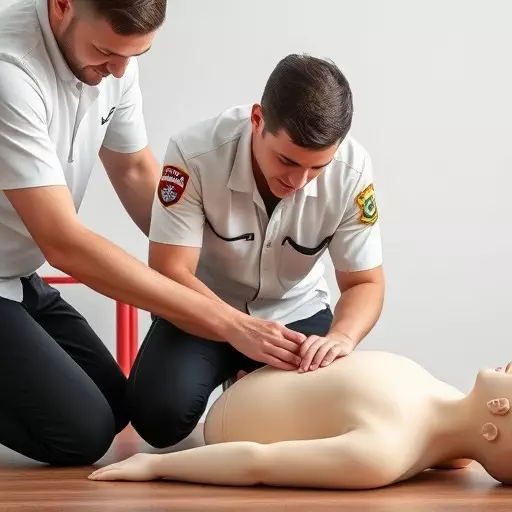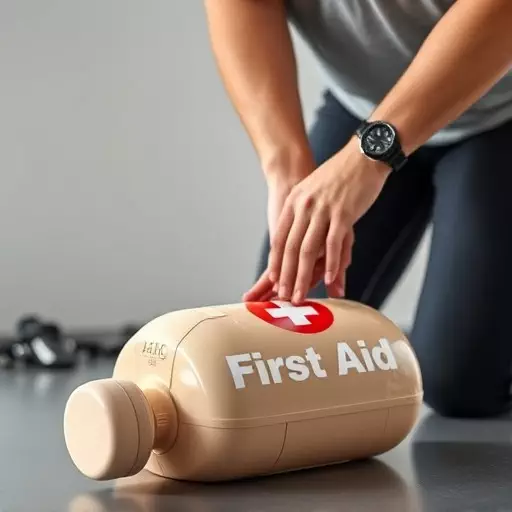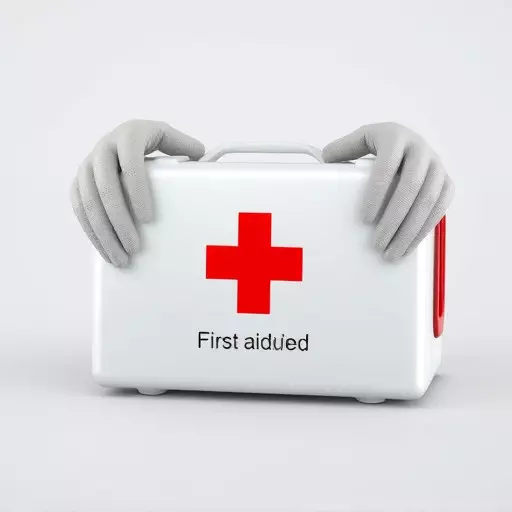Burns and scalds range from minor to severe, requiring tailored first aid. Causes include heat, cold, chemicals, and electricity. Immediate action is vital: cool the area (not freeze), seek prompt medical attention for severe cases. Basic Life Support (BLS) training includes CPR, crucial in burn-related cardiac arrest. Regularly update first aid and CPR training, including basic life support (BLS) skills to meet first aid certification requirements and be prepared to handle emergencies effectively.
Burns and scalds can occur in various degrees of severity and are a common household hazard. Understanding these injuries, from mild redness to severe skin damage, is crucial for effective first aid. This guide explores different burn types, immediate response strategies, and essential life-saving techniques like Basic Life Support (BLS) and CPR. Additionally, it delves into the importance of maintaining current first aid certification requirements to ensure you’re prepared to handle emergencies confidently.
- Understanding Burns and Scalds: Degrees and Causes
- Immediate Actions: First Aid for Mild to Severe Burns
- Basic Life Support (BLS) and CPR: When to Implement
- First Aid Certification Requirements: Staying Prepared and Trained
Understanding Burns and Scalds: Degrees and Causes

Burns and scalds are injuries caused by heat, cold, chemicals, or electrical current. Understanding the different degrees of burns is crucial when administering first aid. First-degree burns affect only the outer layer of skin, causing redness, swelling, and pain. Second-degree burns involve both the outer and underlying layers, resulting in blisters, severe pain, redness, and swelling. Third-degree burns are the most severe, damaging all layers of skin and potentially exposing underlying tissues.
Causes of burns and scalds include contact with hot objects (like stove tops or sunbeds), exposure to flammable liquids or gases, electrical shocks, and chemical splashes. Scalds often result from contact with hot liquids or steam. Proper first aid and basic life support training equip individuals with the skills needed to handle such emergencies, potentially saving lives and mitigating long-term damage. First aid certification requirements vary by region, but a widely recognized standard is the Red Cross’s Adult First Aid, CPR, and AED course. These courses teach participants how to assess and respond to various medical situations, including burns and scalds, ensuring they can provide effective care until professional help arrives.
Immediate Actions: First Aid for Mild to Severe Burns

In the event of a burn or scald, immediate action is crucial for effective first aid and potentially saving a life. The initial response should focus on cooling the affected area to prevent further damage. Running cool (not cold) water over the burn for at least 10-15 minutes is recommended, ensuring that clothing is not constricted around the wound. This simple step can help reduce pain, limit tissue damage, and prepare the burn for proper treatment.
For more severe burns, or if the affected area is large, seeking medical attention promptly is essential. While en route to a healthcare facility, basic life support (BLS) training can aid in managing vital signs and ensuring breathing remains steady. First aid and CPR training, including understanding first aid certification requirements, empowers individuals to provide critical care until professional help arrives.
Basic Life Support (BLS) and CPR: When to Implement

In the event of severe burns or scalds, immediate and appropriate first aid can be a matter of life and death. Basic Life Support (BLS) and Cardiopulmonary Resuscitation (CPR) are crucial skills for anyone seeking first aid certification. BLS training teaches individuals to recognize and respond to life-threatening emergencies, including uncontrolled burning or scalding. It involves assessing the situation, activating emergency medical services, and providing breathing support or CPR if needed.
CPR is specifically indicated when a person exhibits signs of cardiac arrest, which can occur in severe burn cases due to shock. First aid certification requirements often include learning these life-saving techniques, ensuring that individuals are prepared to handle such emergencies until professional help arrives. Regular first aid and CPR training is recommended to maintain proficiency, as these skills must be used promptly and effectively during critical situations.
First Aid Certification Requirements: Staying Prepared and Trained

Staying prepared and trained is crucial in dealing with burns and scalds, which often require immediate first aid intervention. First aid and CPR training, including basic life support (BLS) skills, are essential components of any comprehensive emergency preparedness plan. These certifications equip individuals with the knowledge and confidence to respond effectively during critical situations, potentially saving lives.
Regular updates and recertifications are recommended due to advancements in medical practices and evolving guidelines for first aid treatment. Staying current ensures you’re prepared to handle burns and scalds using the most effective techniques available. Many reputable organizations offer first aid and CPR training courses that cater to various levels of proficiency, from basic to advanced life support, enabling individuals to choose a path aligned with their skills and responsibilities.


